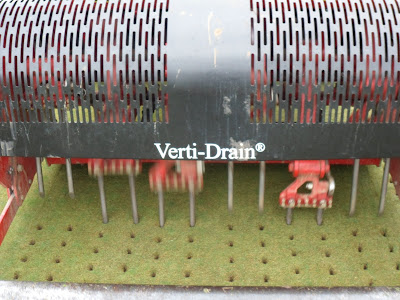In response to two very close floods at the end of October and the middle of November we have recently undertaken wide ranging activities to reinstate the courses.
In the immediate short-term after a flood all our labour resources are directed towards the swift recovery of two neat and tidy courses.
The residual effects of the original rush of the flood-water and the consequential standing water lingering for over 20 days is mostly seen in the condition and playability of the bunkers. Continuing, intense repair and resanding work to nearly 40 bunkers has only just been completed - and now we have been unexpectedly flooded again to the highest levels in almost 3-years!
Ordinarily we consider a flood if the tide-tables highlight a high-tide over 7.45 metres - but this morning we have seen extensive flooding of the courses with data from the Oceanographic Laboratory indicating a high-tide at 4.14am of only 7.03 metres.
 |
| view from the back of the 17th Pam Barton green looking down the Pam Barton 16th and across to JHTaylor 14th green |
 |
| view across the Pam Barton 15th tee towards the JHTaylor 9th green |
 |
| closer view of the JHTaylor 9th green |
 |
| view across the Pam Barton 15th hole towards the King's Observatory |
 |
| view from the King's Observatory across the Pam Barton 15th green towards the JHTaylor 9th green |
 |
| view back up the Pam Barton 17th as the high-tide recedes from the Pam Barton 16th green |
































